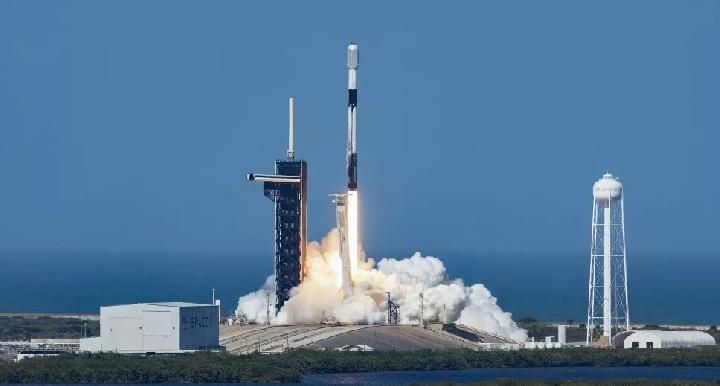
SpaceX is in the process of losing up to 40 new Starlink internet satellites due to a geomagnetic storm that hit the day after the launch of its fleet last week.
A geomagnetic storm from the intense solar wind recently occurred. The event was preceded by the eruption of the Sun on January 30, 2022. The storm threw a wave of charged particles. Earth which is not far from the Sun is affected.
The burst of particles is expected to arrive on Earth on February 2, 2022. A day later, the effects of a geomagnetic storm above Earth slightly increase the density of the atmosphere.
Elsewhere, the SpaceX Falcon 9 rocket launched 49 Starlink satellites on Thursday, February 3, 2022, from NASA's Pad 39A at Kennedy Space Center, Florida. The density of the atmosphere, increases the drag on the satellites and destroys most of them.
"Preliminary analysis shows increased drag at low altitude prevents the satellite from leaving safe mode to initiate orbital maneuvers, and up to 40 satellites will either reenter or have re-entered Earth's atmosphere," SpaceX wrote.
This interaction can warm Earth's upper atmosphere and increase the density of the atmosphere high enough above the planet to affect low-orbit satellites such as SpaceX's new Starlink craft.
The 49 satellites SpaceX launched last week were deployed in initial orbits that hurtled as low as 130 miles (210 kilometers) above Earth at their lowest point.
SpaceX said it purposely released the Starlink batch in low orbit so that it could be disposed of quickly in the event of a failure shortly after launch.
The satellite was then placed in protective "safe mode" and ordered to fly "like a piece of paper" to minimize the drag effect as the company worked with the US Space Force and company LeoLabs to track it with ground-based satellites. radar, he added.
But for most of the new Starlink satellites, the bottleneck is too much. Locked in their safe mode, up to 40 of them are thought to have fallen from orbit like space debris, just days after their launch.
"This unique situation demonstrates the great effort the Starlink team has put into ensuring the system is on the cutting edge of debris mitigation in orbit."
SpaceX's Starlink launch last week, called the Starlink 4-7 mission, was the company's third Starlink flight in 2022. The 49 satellites aboard are expected to join the more than 1,800 other Starlink satellites currently in orbit.
The project aims to provide high-speed internet access to customers anywhere on Earth, particularly in remote or underserved areas.